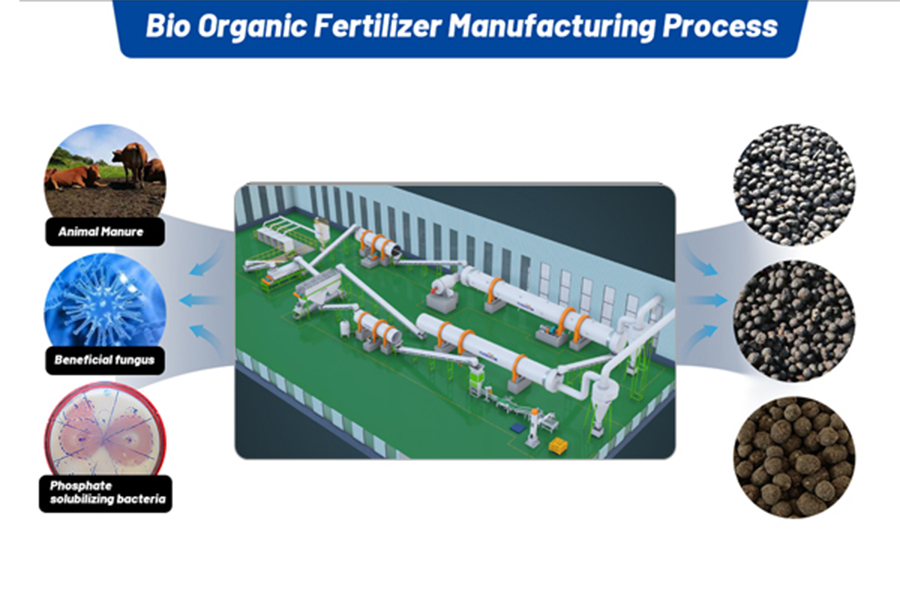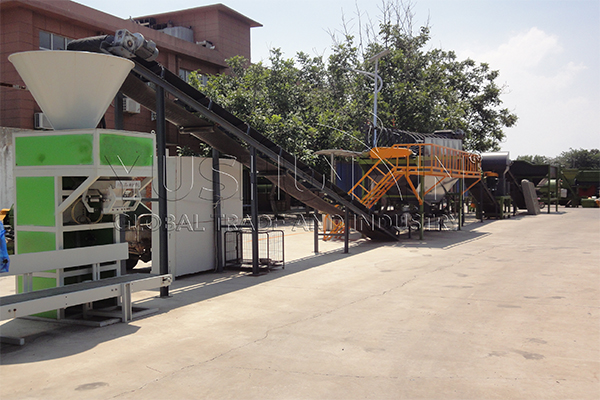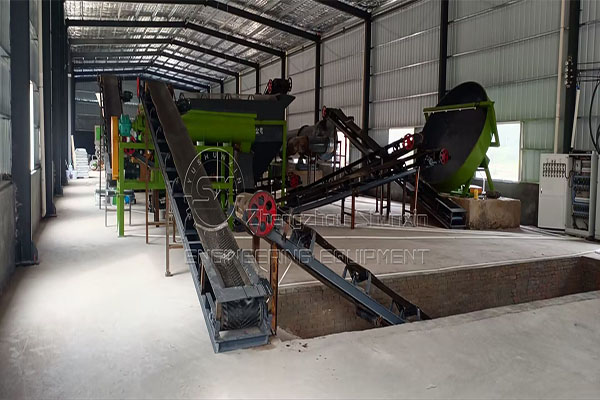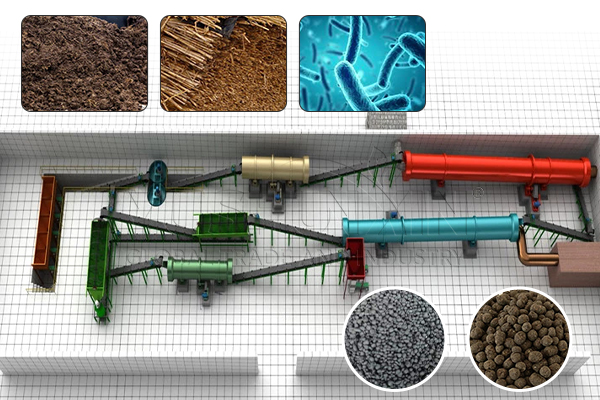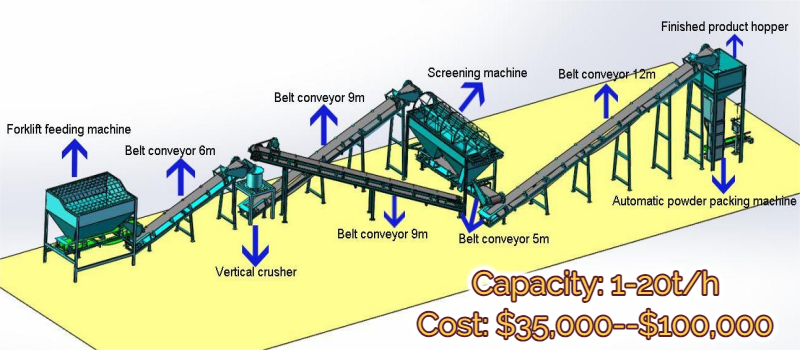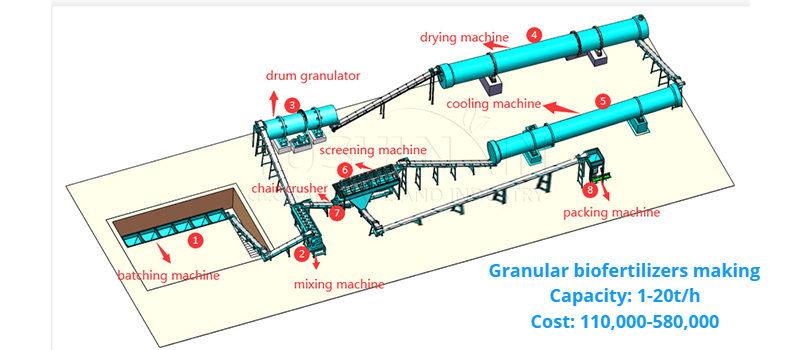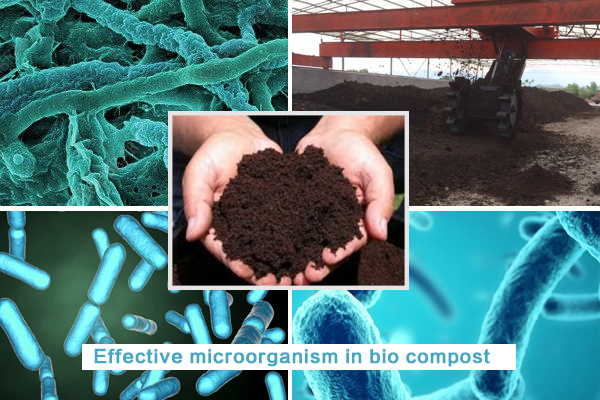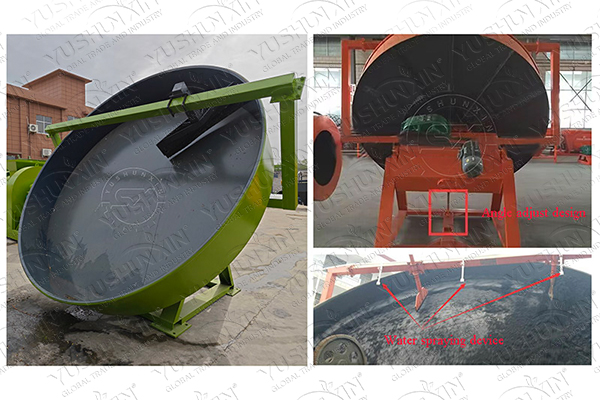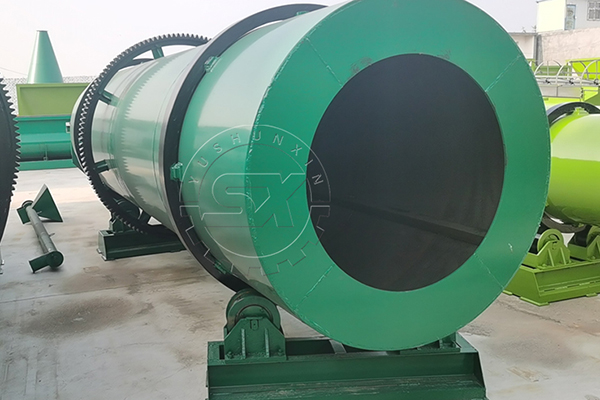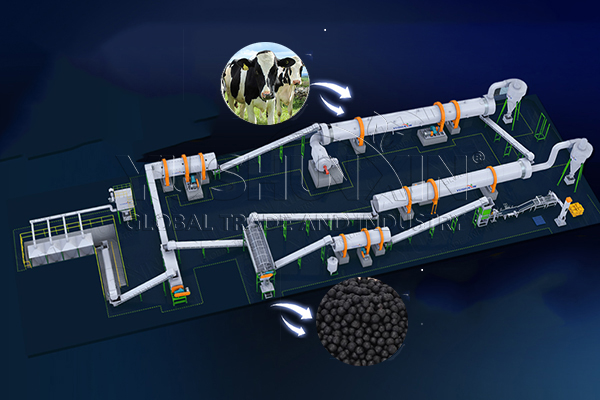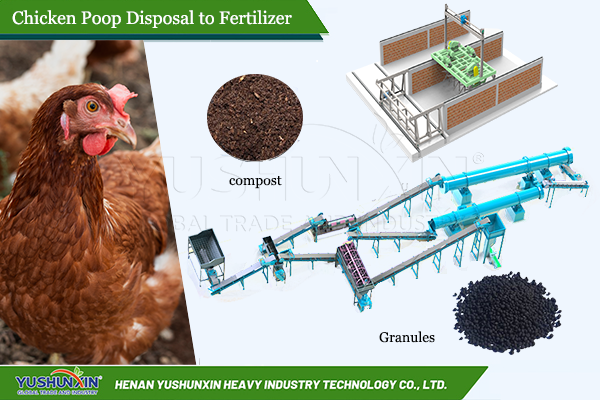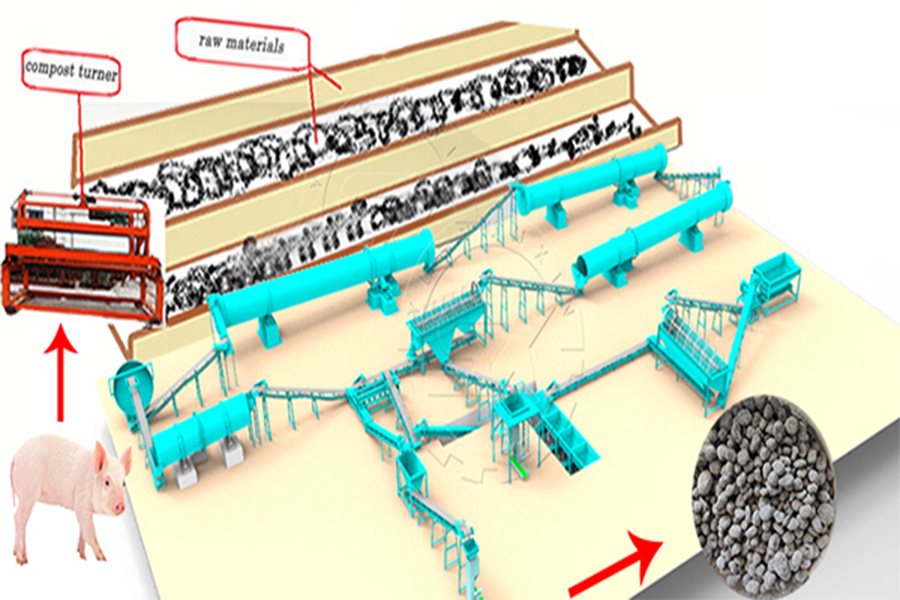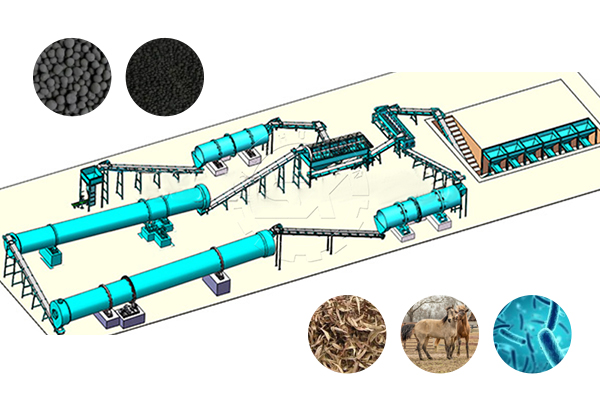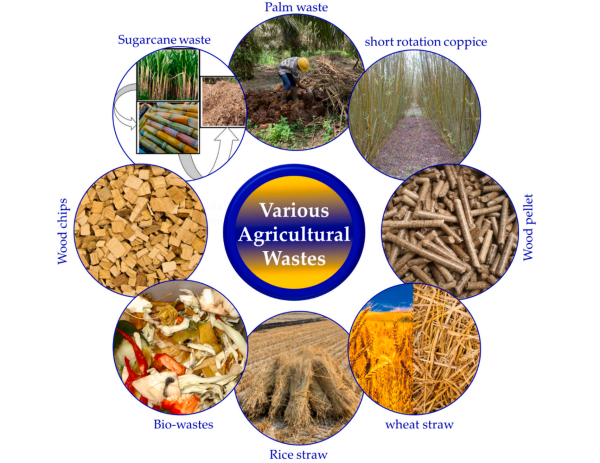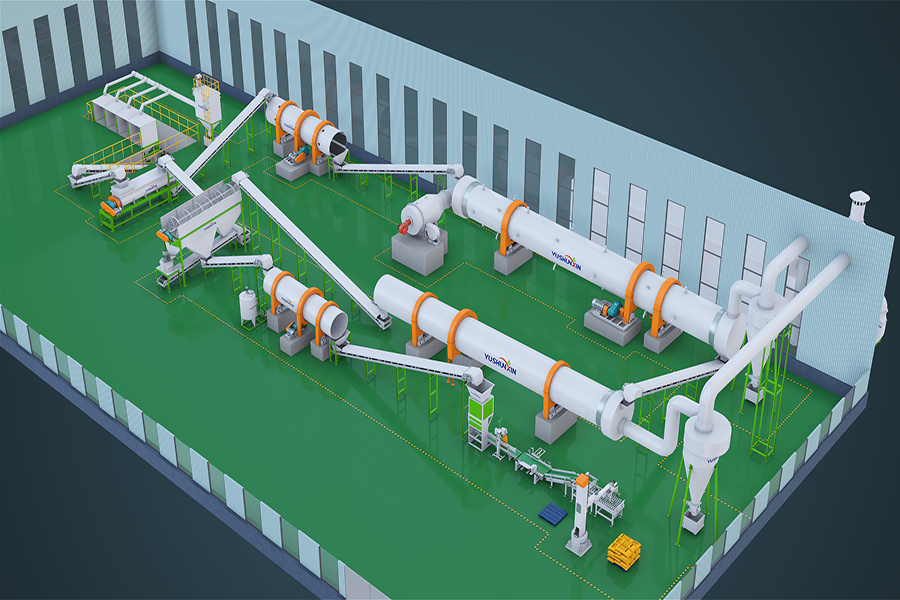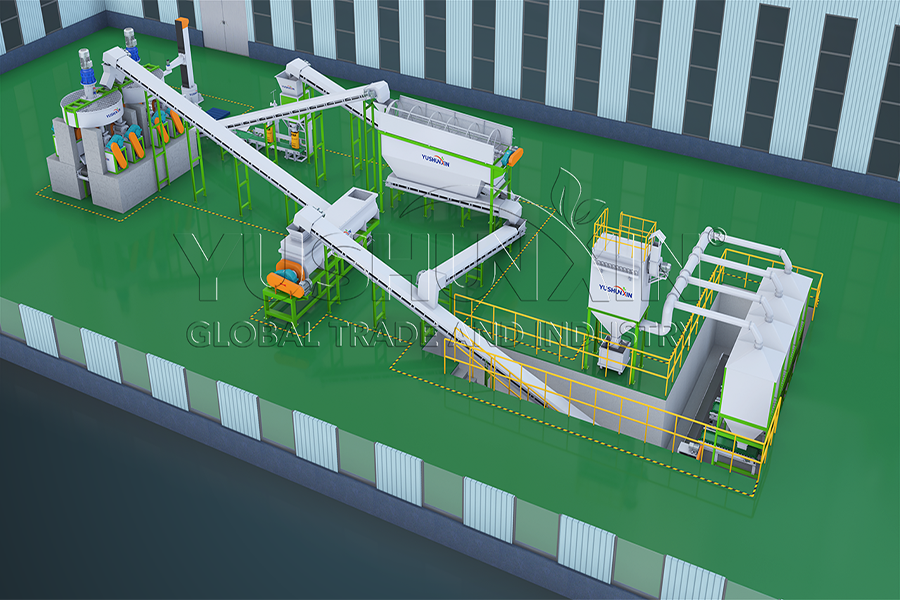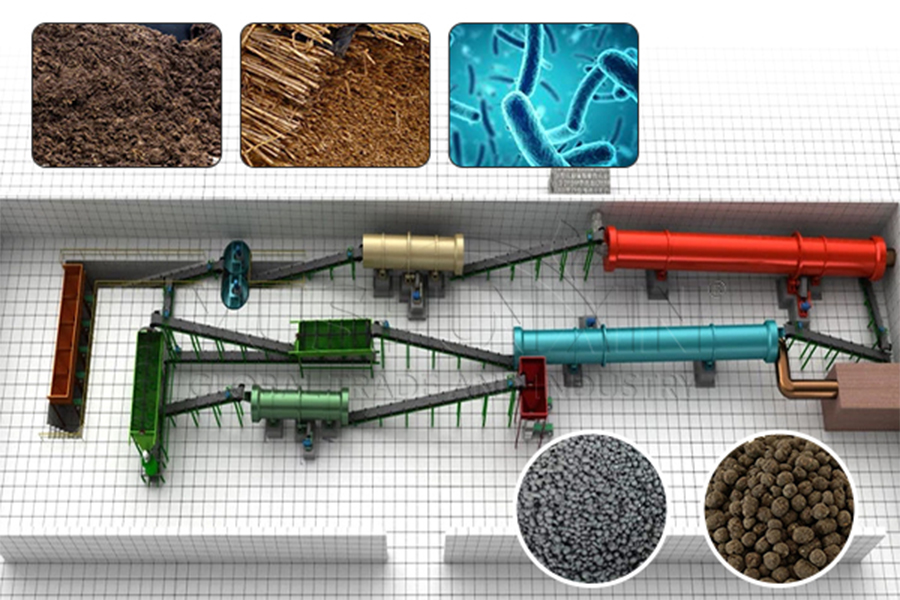Bio organic fertilizer can improve soil vitality and crop quality. Usually, you can choose organic waste such as livestock manure, straw and biogas residue to produce bio organic fertilizer. When you setup a bio organic fertilizer production line, you need to go through several stages of preparing raw materials, fermentation, crushing, granulation, dryinga and cooling, and packaging. YUSHUNXIN will provides you the right biological fertilizer making machine in each steps. At the same time, we can design the bio organic fertilizer production business plan according to your raw material, capacity, biofertilizer type ect. So, if you are interested, please contact us.
Which business plan is right for you: Powdered or Granular Biofertilizer Making?
The above is the whole process of bio-organic fertilizer manufacturing. But do you know how to build your own organic biofertilizer production line? Choosing the right form of biofertilizer depends on your budget and market.
YUSHUNXIN can provide you with the professional powdered biofertilizer production technology, and dry or wet granulation method. If you want to produce different types of bio fertilizers, welcome to consult YUSHUNXIN!
What Is the Cost of Setting Up a Bio Organic Fertilizer Factory?
The cost to set up an organic bio fertilizer plant largely depends on your chosen product form—powdered or granular.
Powdered bio fertilizer plant project cost:
For powdered biofertilizer production, the basic configuration includes a compost turner, automatic loader, bio-compost crusher, rotary screener, automatic packaging machine, and belt conveyors. This setup supports efficient processing from raw material to finished fertilizer.
✅ Estimated cost: $35,000 – $100,000, depending on your desired output capacity (from 1–20 t/h).
Granular Organic Biofertilizer Production Line Cost:
A typical granular bio-organic fertilizer production line consists of: compost turner, crusher, mixer, granulator (disc, drum, or roller type), rotary dryer, cooler, screener, coating machine, packing machine, and necessary conveyors.
✅ Estimated cost: $110,000 – $580,000, depending on capacity (1–20 t/h), granulation method, and automation level.
When to Add Microbial Agents in Bio-Organic Fertilizer Manufacturing?
In organic biofertilizer production process, microbial agents are typically added at three key stages—before, during, and after granulation—depending on their function and heat tolerance.
Choosing the right bacteria and equipment ensures effective microbial survival and nutrient delivery in your biofertilizer.
What are the raw materials for organic bio fertilizer production?
Bio organic fertilizer is made from a wide variety of raw materials—many of which may already be available on your farm or in your area. Here are the most common options:
Animal Manure As organic biofertilizer
Animal waste is the most common and effective raw material in the preparation of biofertilizers. It is rich in nitrogen, phosphorus, potassium, and organic matter. Such as chicken manure, cow dung, pig manure, sheep and goat manure.
Tip: You must compost fresh manure to reduce pathogens and ammonia toxicity before them be granulated.
Biogas Residue and Digestate as organic biofertilizer
Leftovers from biogas plants are high in nutrients and organic matter. On the one hand, you can use the bigestate liquid in liquid fertilizer production. On the other hand, the biogas residue is ideal for granulation after dehydration and composting.
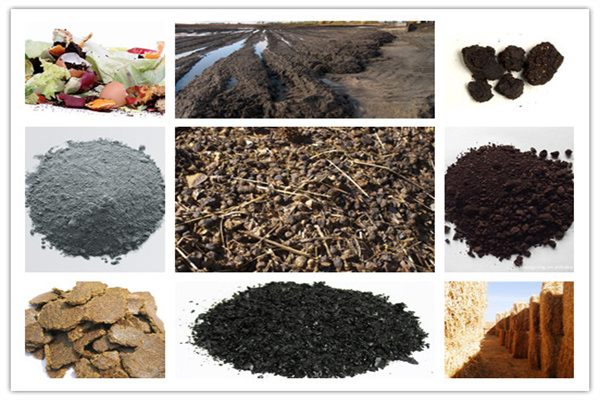
Agricultural Waste as organic fertilizer
Crop residues and plant-based waste are excellent carbon sources that balance high-nitrogen materials. For example, wheat and rice straw, corn stalks and husks, peanut shells, soybean husks, ect. These materials decompose slowly, so you can crush and mix them with manure or microbial inoculants to improve composting speed and quality.
Need help choosing the right raw materials for your project? Contact YUSHUNXIN, and we’ll design a personalized solution for your local resources.
How to start a organic bio fertilizer production company?
Starting a bio organic fertilizer production company begins with a clear plan. Here is a brief guide.
Whether you’re entering the bio fertilizer market or upgrading your existing biofertilizer production plant, we can deliver efficient, reliable business solutions. Let us guide your setup, from raw material selection to process integration.
Successful cases of setting up bio organic fertilizer manufacturing plants:
At present, YUSHNXIN has helped customers in many regions of the world to establish bio organic fertilizer plants. In combination with customers’ requirements for raw materials, output, equipment, etc., YUSHUNXIN has designed the organic biofertilizer production plan for them.
For example: a 10t/h biological organic fertilizer plant in Brazil, a 20,000 t/y organic biofertilizer factory in Mexico, and a 100,000 t/y organic biological fertilizer granulation line in vietnam. Whether it is a small or large output, our company can provide you biological organic fertilizer making machine according to your requirements. Welcome to consult!
FAQs about to make high quality bio organic fertilizer:
Q: How many tonnes of organic waste required to make 1 kg biological organic fertilizer?
Generally speaking, the raw material output ratio of bio organic fertilizer is 3:1. This means that when you produce 5 tons of bacteria organic fertilizer, you need to prepare 15 tons of organic raw materials and some auxiliary materials.
Q: How long it takes to make organic bio fertilizer?
Generally speaking, the process of making bio organic fertilizer will spent 30-35 days. You also can adopt two method to speed up the production recycle. First, crushing the organic waste before composting. Then, add starter cultures during the composting process.
Q: can I make bio organic fertilizer from mushroom residue?
Yes, mushroom residue is one of the raw materials for organic biofertilizer manufacturing. Making biofertilizer from spent mushroom substrate involves composting, crushing, granulation, screening, drying, and other processing steps.


